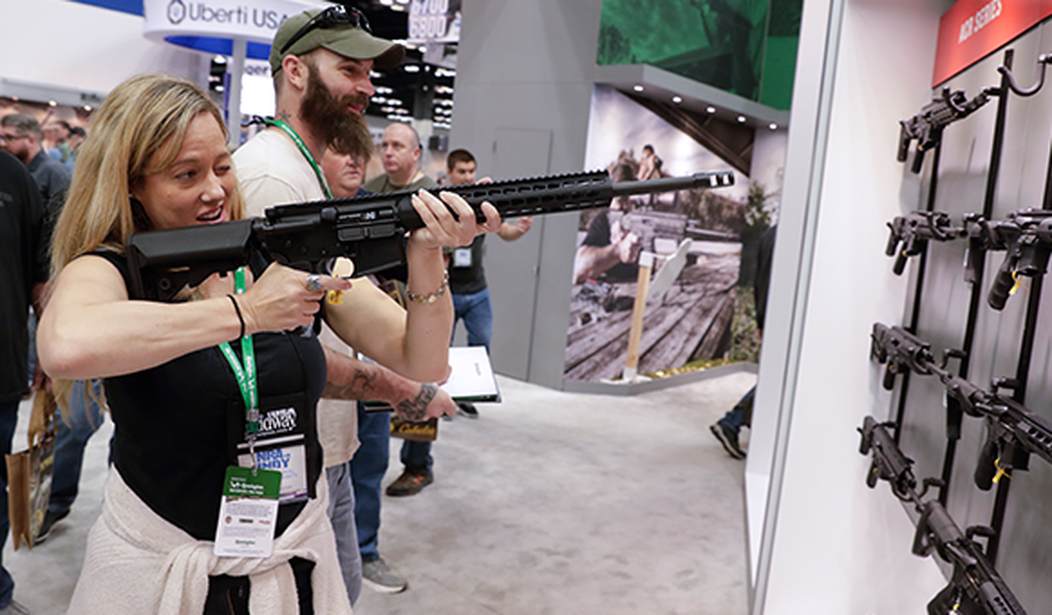The Supreme Court has already granted cert for Bianchi v. Frosh, but sent the case back down to the Fourth Circuit Court of Appeals for review in light of the Court’s decision in Bruen earlier this year. We know that SCOTUS has its eyes on the case, but what we don’t know is what the Fourth Circuit plans to do with it.
We’re at least one step closer to an answer today after the appellate court heard oral arguments in the case. A three-judge panel peppered attorneys on both sides with pointed questions ranging from whether the banned arms are in “common use to whether the Fourth Circuit should kick the case all the way back down to district court for a do-over.
Attorneys for the state of Maryland made the unconvincing argument that the Fourth Circuit is bound by its previous decision upholding Maryland’s gun ban in a case called Kolbe v. Hogan, in which the appeals court determined that Maryland’s ban on modern sporting rifles was perfectly fine because those guns aren’t protected by the Second Amendment anyway; dubiously claiming that since semi-automatic rifles are “like” machine guns, which Justice Antonin Scalia suggested fall outside the scope of the Second Amendment in Heller, their possession, manufacture, and sale could be criminalized as much as the Democratic majority in Maryland’s legislature wanted to.
The Bruen case, however, made it clear that the two-step, tiered scrutiny approach adopted by the Fourth Circuit in Kolbe is not the proper test of modern gun control laws. Instead, courts must look to the text, history, and tradition of the right to keep and bear arms, and I’m fairly confident that the panel of judges agree with the plaintiff’s assertion that a new look at the state’s gun ban is in order.
The decision to keep the case in the Fourth Circuit or send it down to district court seems a little less clear, but the plaintiffs made a good case for the Fourth Circuit to decide the constitutionality of Maryland’s “assault weapons” ban; both in oral arguments today and in their most recent brief in the case.
Contrary to the State’s claim that “the standard for evaluating prohibitions on particular weapons is still evolving,” as Plaintiffs have explained, the standard is set and all the historical work necessary to resolve this case has been done already by the Supreme Court. Under Bruen’s analytic framework, because the banned semiautomatic rifles are “Arms” within the plain text of the Amendment, see Heller, 554 U.S. at 582, the only question is whether history provides a justification for Maryland’s ban. But again, the Supreme Court has explained that it is “ ‘fairly supported by the historical tradition of prohibiting the carrying of dangerous and unusual weapons’ that the Second Amendment protects the possession and use of weapons that are ‘in common use at the time.’ ” Bruen, 142 S. Ct. at 2128.
Therefore, if a firearm is in common use today, it cannot be banned. As Plaintiffs have conclusively demonstrated, the banned rifles are among the most common firearms in the country and overwhelmingly used by lawabiding citizens for lawful purposes. See Pls.’ Suppl. 29–32. That settles the matter, and this Court should say so.
Defendants seek to defer reaching the unavoidable conclusion from this “objective and largely statistical inquiry.” Kolbe, 849 F.3d at 153 (Traxler, J., dissenting) (quotation omitted). Instead, they seek to remand this case for fruitless discovery that could not alter the dispositive facts, which are “beyond any reasonable dispute.” Id. There is no reason to defer decision, as Bruen itself demonstrates.
Procedurally, Bruen and this case are on all fours. In Bruen, as here, Plaintiffs filed a lawsuit that was foreclosed by circuit precedent, so no factual development occurred and the district court entered judgment against the plaintiffs on the pleadings. See New York State Rifle & Pistol Ass’n, Inc. v. Beach, 354 F. Supp. 3d 143 (N.D.N.Y. 2018). In holding New York’s may-issue licensing scheme violated the Second Amendment, the Supreme Court expressly rejected the argument that it should remand to “giv[e] respondents the opportunity to develop an evidentiary record,” because “in light of the text of the Second Amendment, along with the Nation’s history of firearm regulation,” the conclusion “that a State may not prevent law-abiding citizens from publicly carrying handguns because they have not demonstrated a special need for self-defense” did not turn on disputed factual questions. Bruen, 142 S. Ct. at 2135 n.8. The case turned on disputes over “legislative facts,” not the sort of facts found in discovery or “determined in trials.” Moore v. Madigan, 702 F.3d 933, 942 (7th Cir. 2012). As such, the Supreme Court was equally well placed as the trial court to weigh them and the parties were able to adequately present them through briefing. Heller itself was on review of a grant of a motion to dismiss, yet the Supreme Court was able to conduct the analysis it needed through the parties’ briefing. See Parker v. District of Columbia, 311 F. Supp. 2d 103, 109 (D.D.C. 2004) (granting motion to dismiss and denying motion for summary judgment as moot).
The same treatment is appropriate here. When Plaintiffs brought this suit, it was foreclosed by Kolbe and they sought to have that precedent overturned by a court competent to do so. In Bruen, the Supreme Court did just that. As in Bruen, there are no issues of adjudicative fact that require remand and this Court should resolve this case on the record that parties have presented in their brief.
Assuming the Fourth Circuit adopts that point of view and doesn’t delay in issuing an opinion on the legality of Maryland’s gun ban, the Supreme Court could potentially get the case in time to schedule it for the fall term in 2023. No matter what the Fourth Circuit decides, the losing party is going to appeal, but I think the plaintiffs have a strong argument on the merits.
In order to overturn Kolbe, the Fourth Circuit first has to decide that the arms in question are, in fact, protected by the Second Amendment. As the plaintiffs point out, the rifles banned under Maryland law are the most commonly-sold rifles across the United States; weapons that are overwhelmingly owned and used for lawful purposes by legal gun owners. Attorneys for the state of Maryland attempted to argue during Tuesday’s court hearing that because AR-15s aren’t fired in many cases of home self-defense, with pistols far more commonly used, that they’re not really in common use at all.
That point was easily rebutted, however, by the plaintiffs, who accurately reasoned that you don’t have to be a victim of violent crime to “use” a firearm in self-defense. Simply having one at the ready in case you need it is “using” the gun, or at least putting it in a position to be used, and AR-15s are unquestionably used for home defense in that fashion… including in my home in the Fourth Circuit territory of Virginia.
You can listen to the oral arguments for yourself here, though the audio file won’t be available until sometime on Wednesday. I think there’s a decent chance of the Fourth Circuit keeping the case, which would definitely speed up the process of an “assault weapons” ban getting in front of the Supreme Court, but I’m curious to get your take after you’ve heard the Q & A for yourself, and I’d love to hear your thoughts in the comments below.









